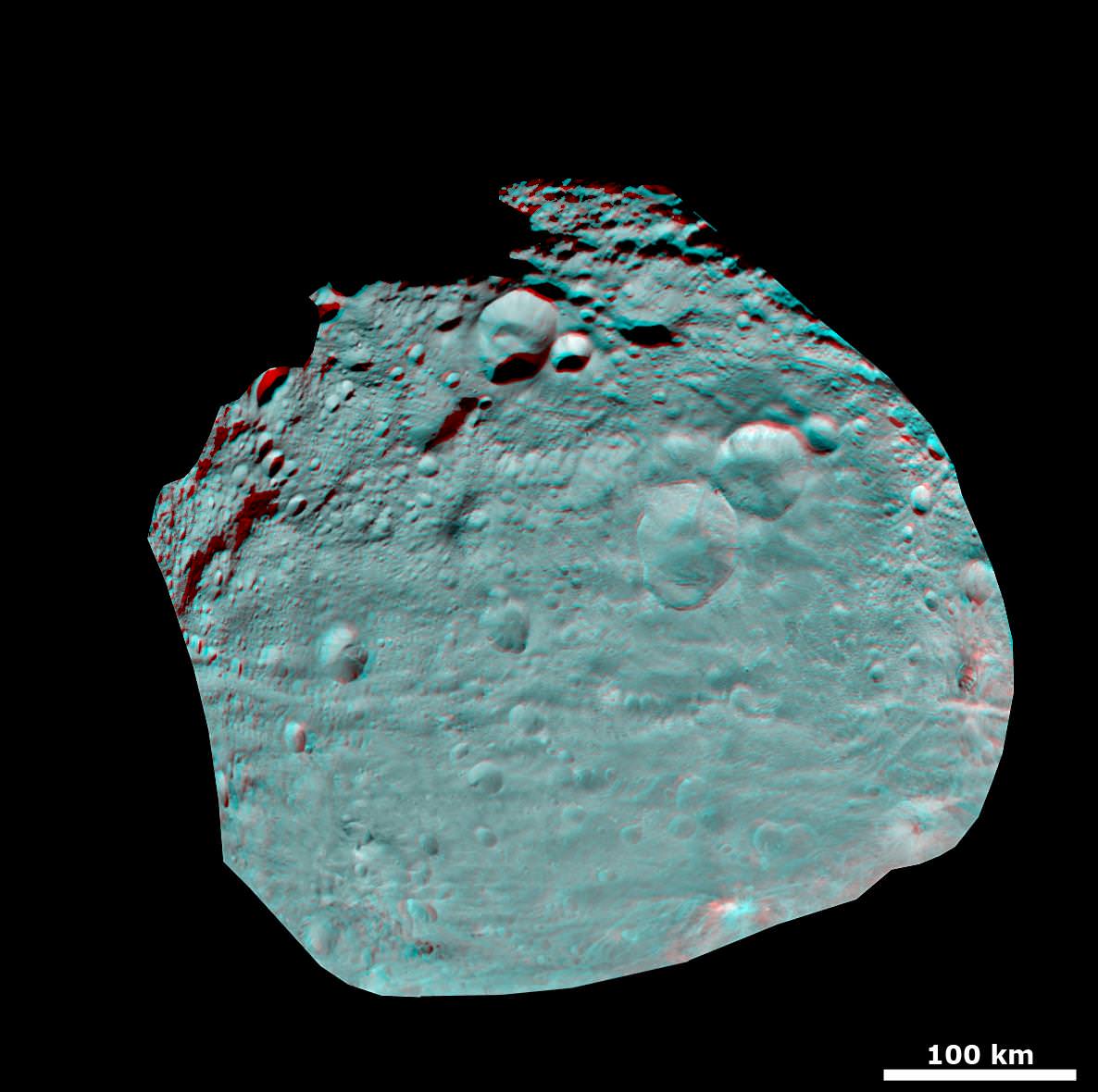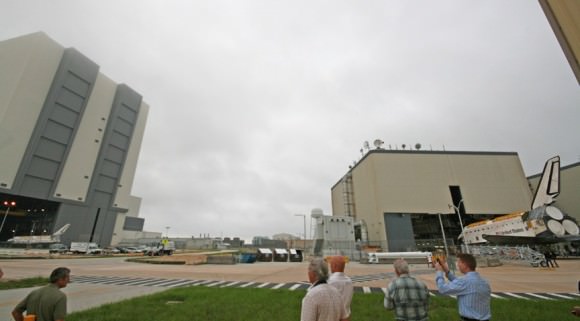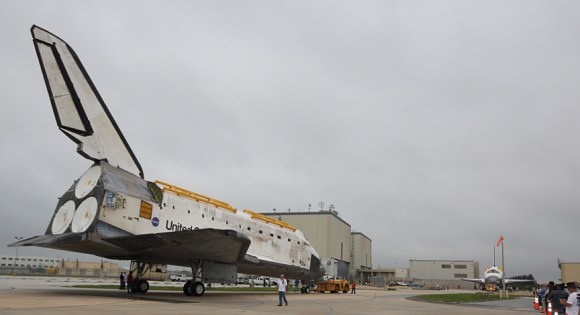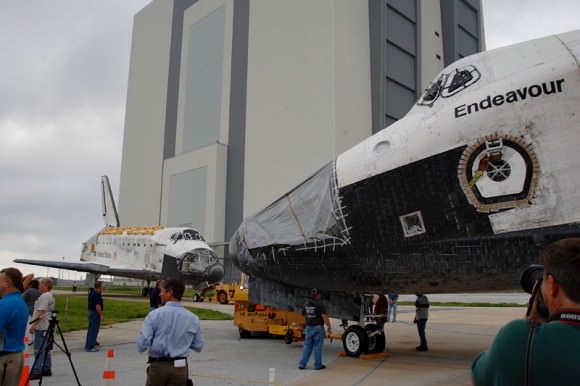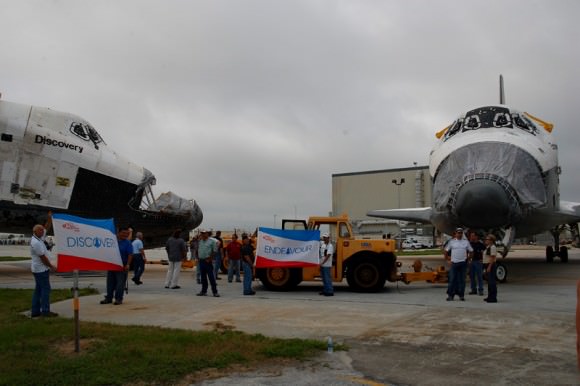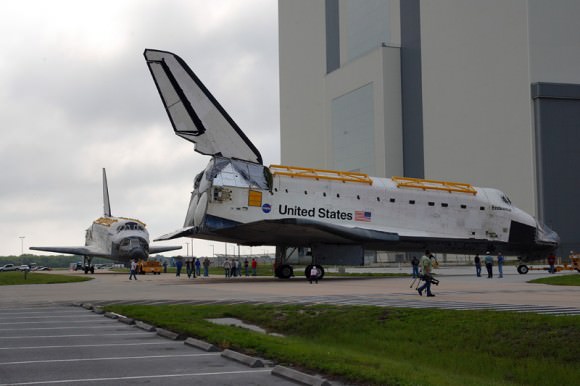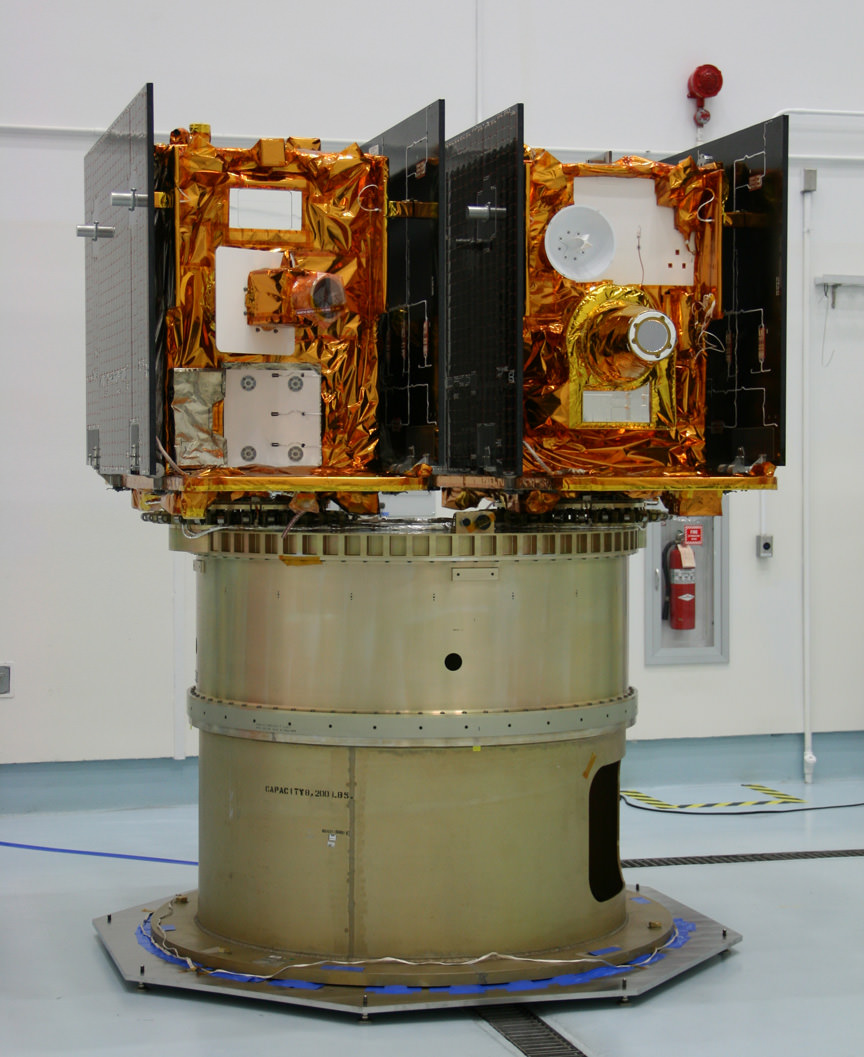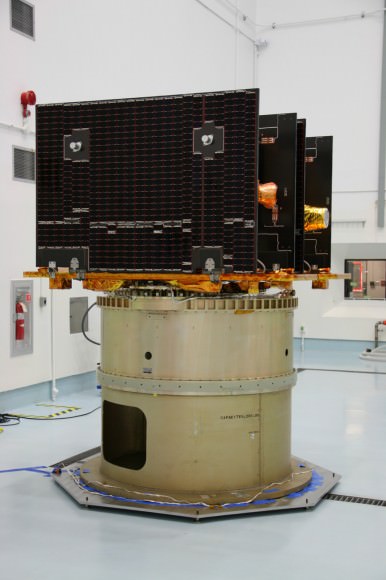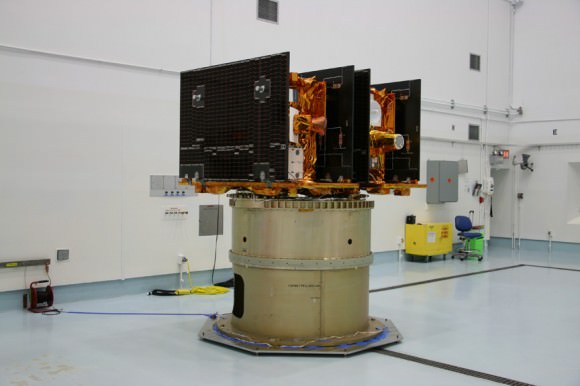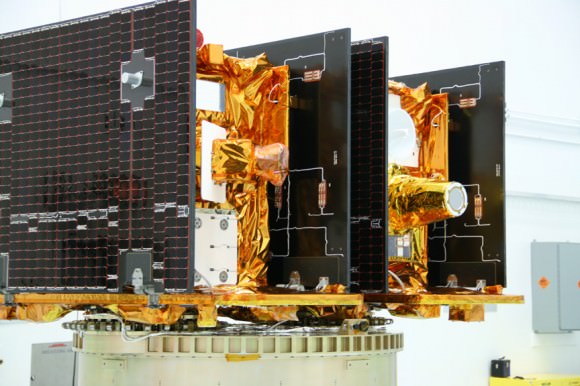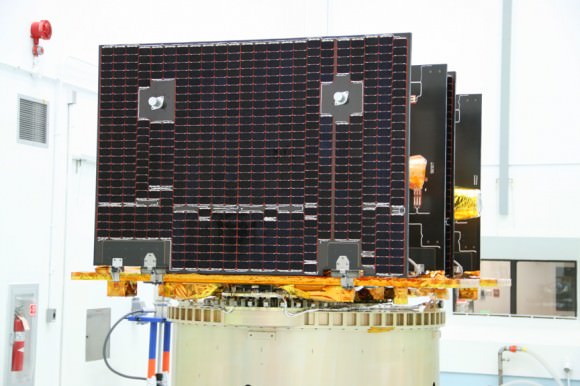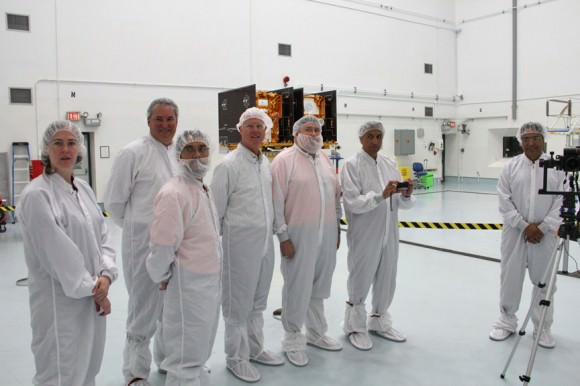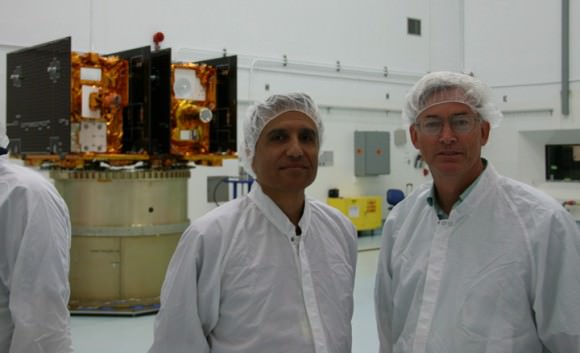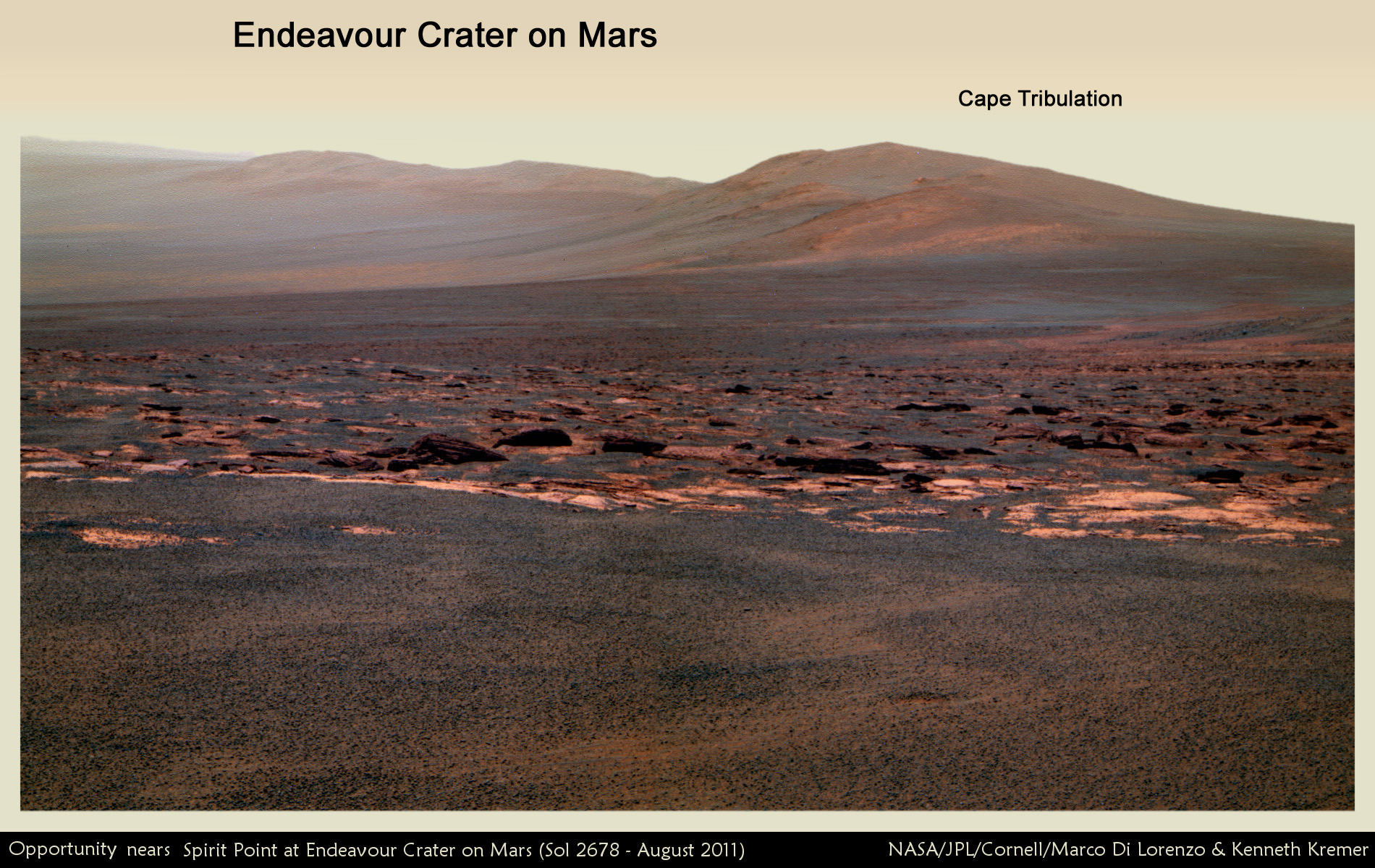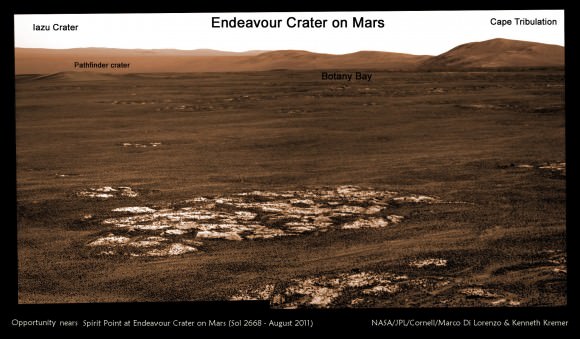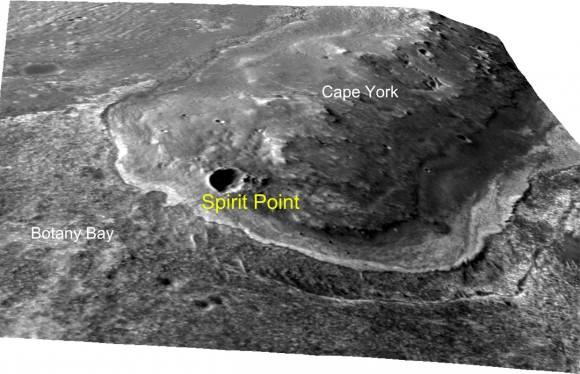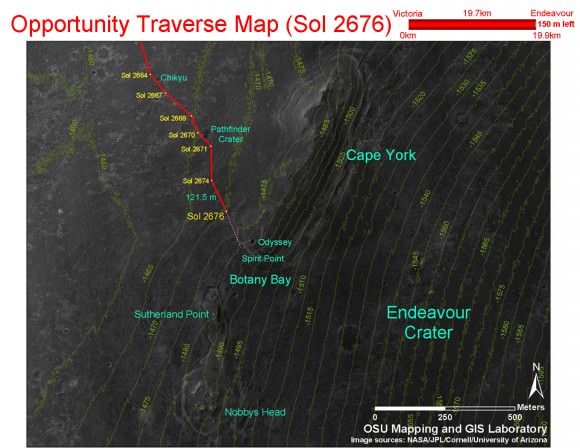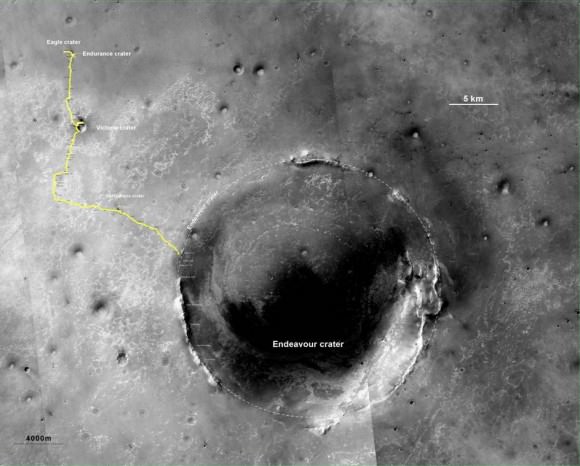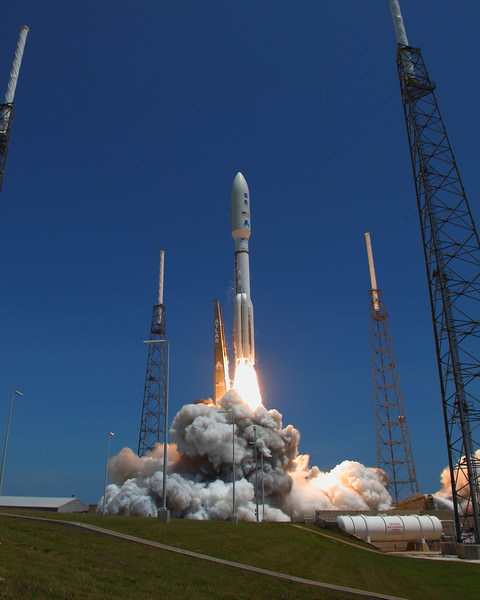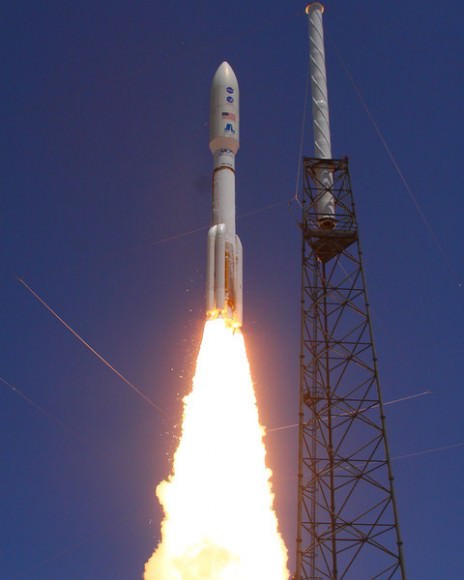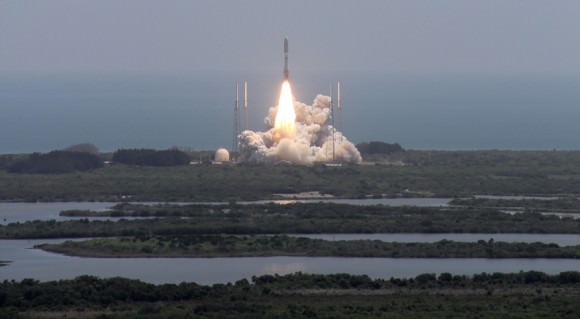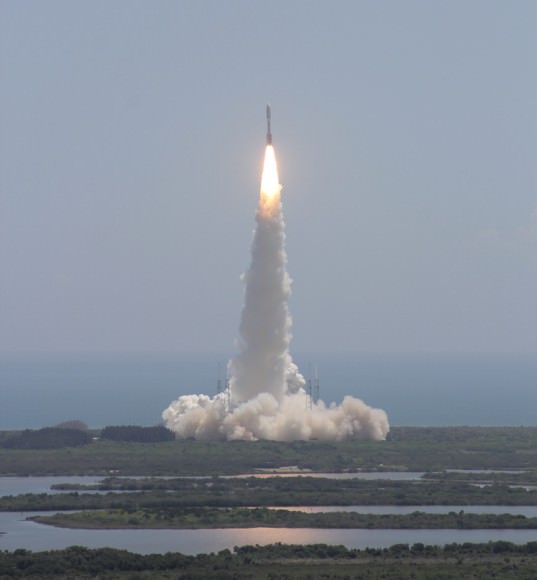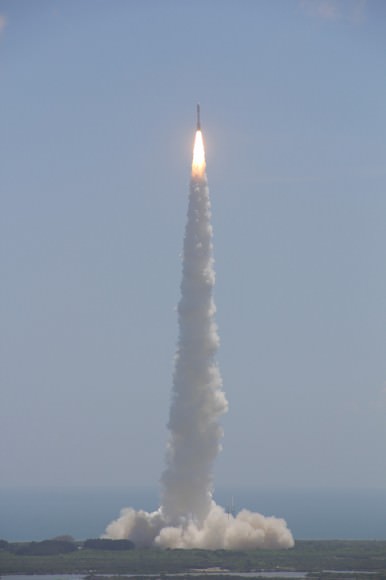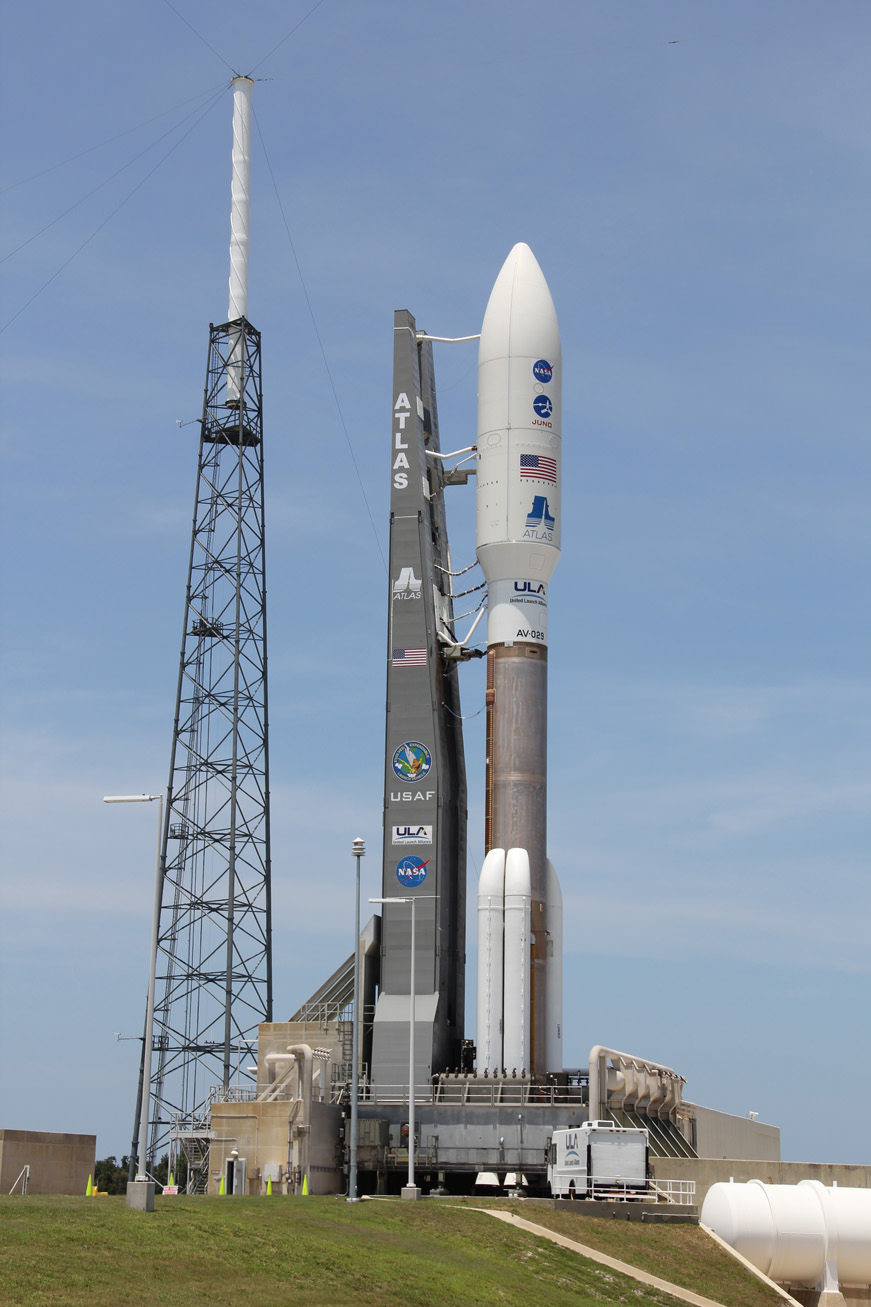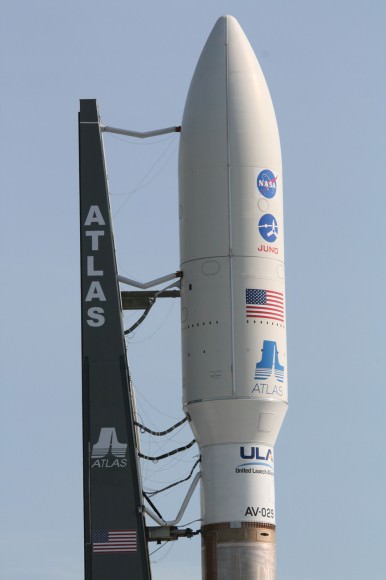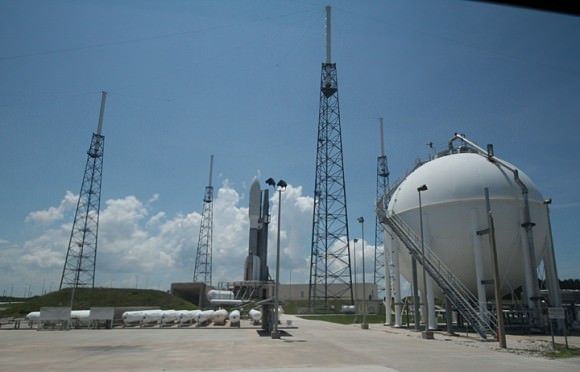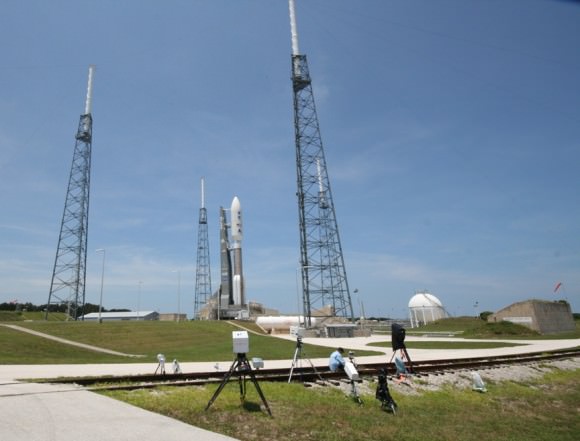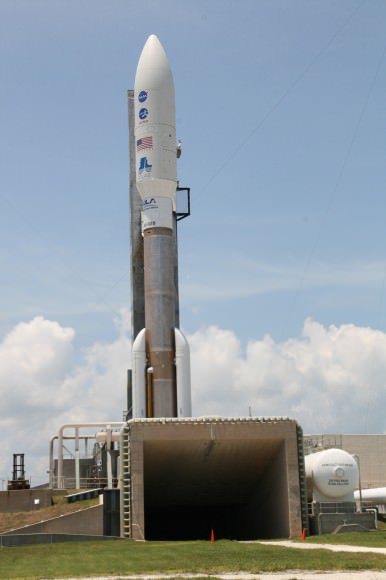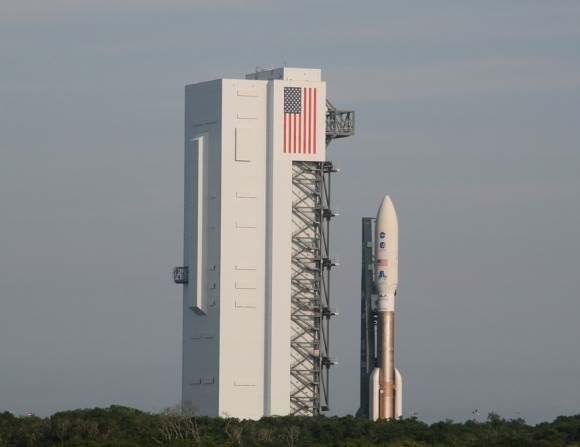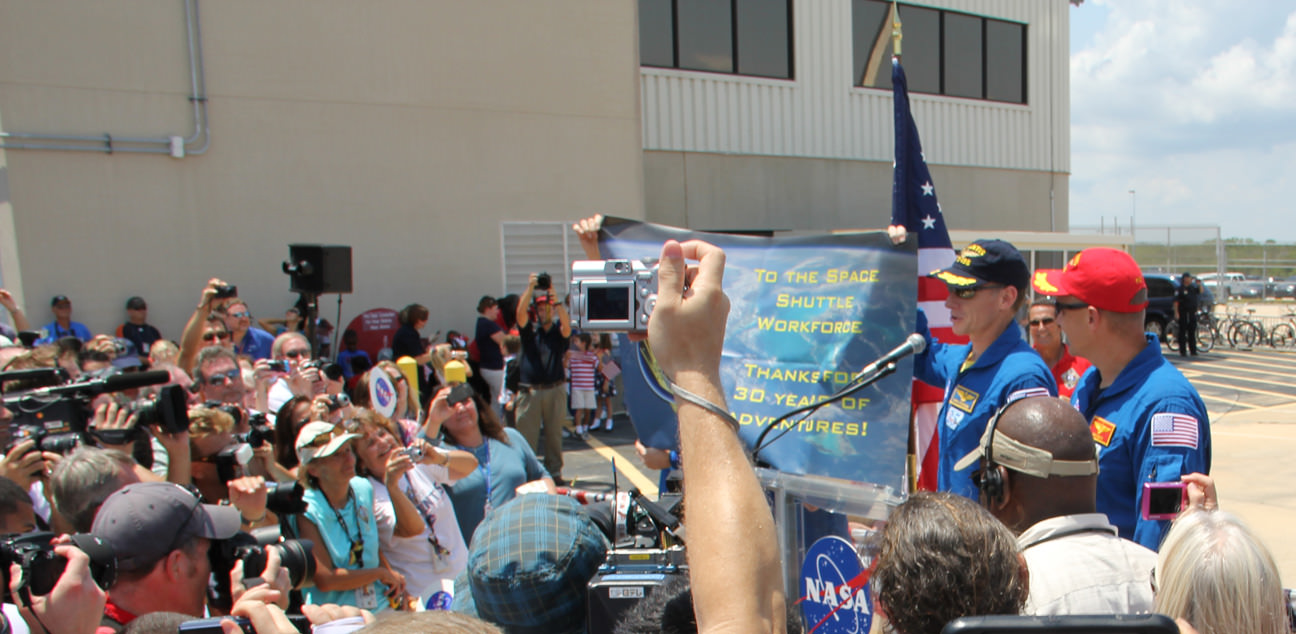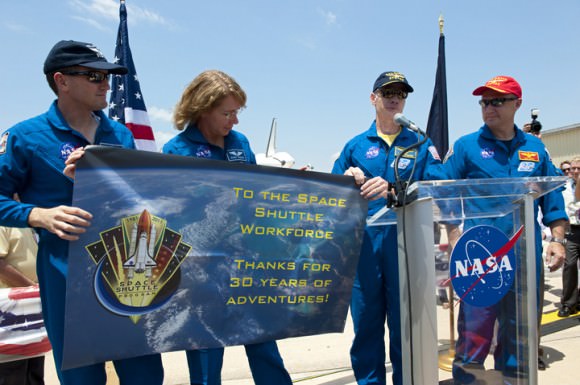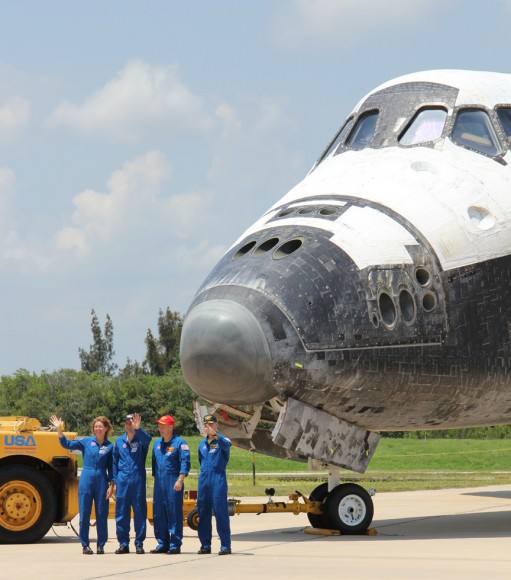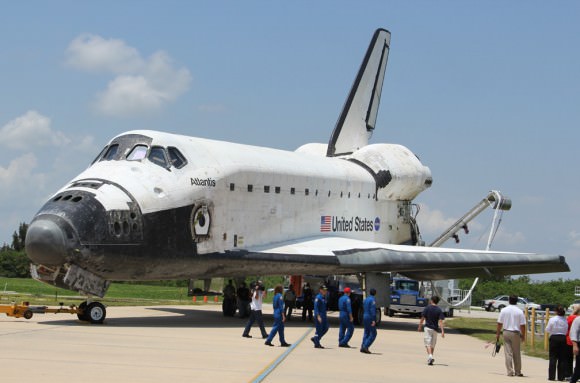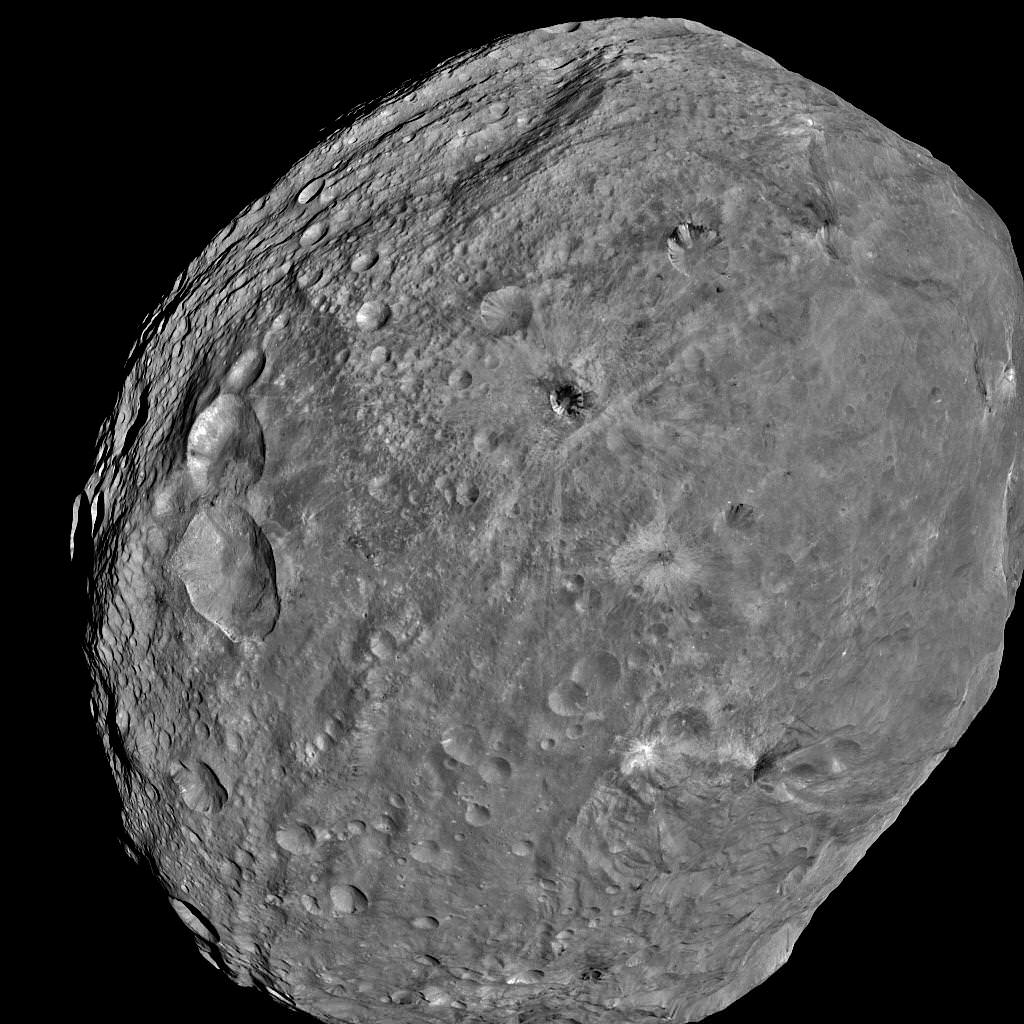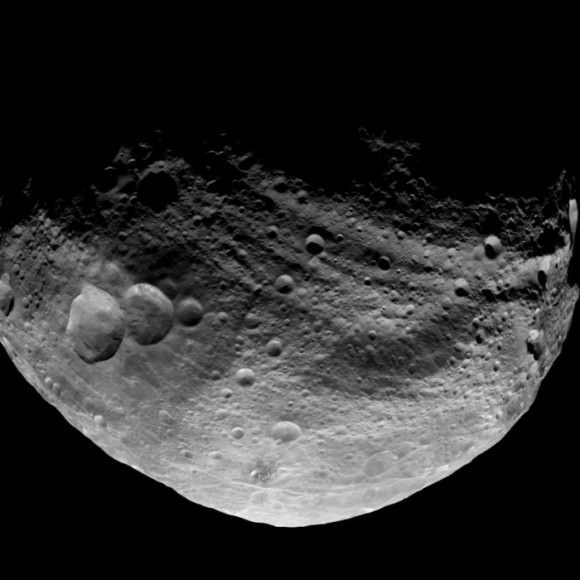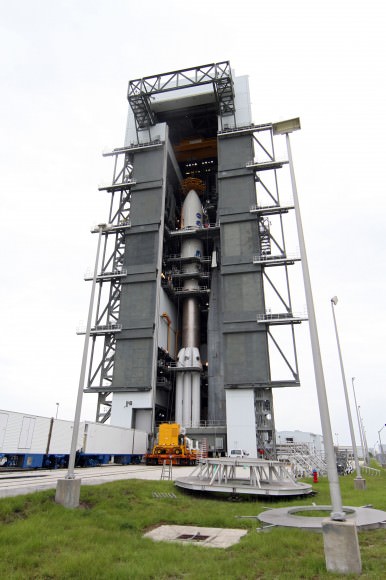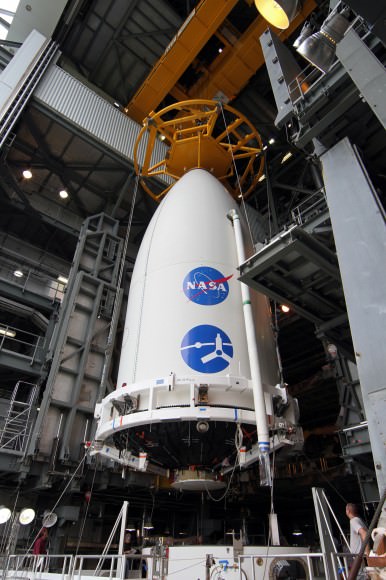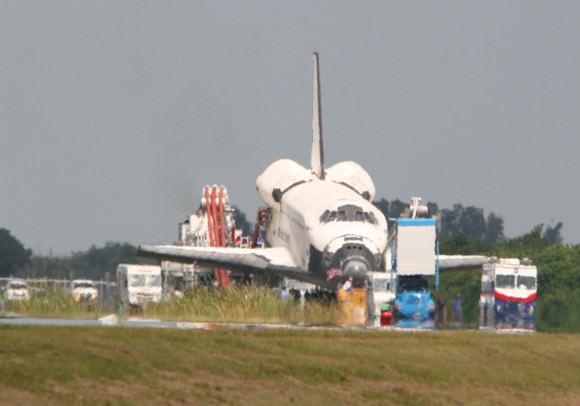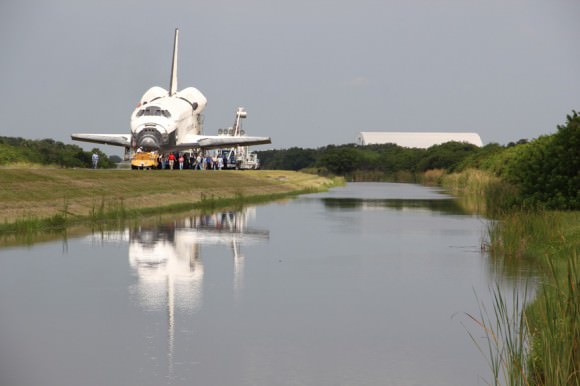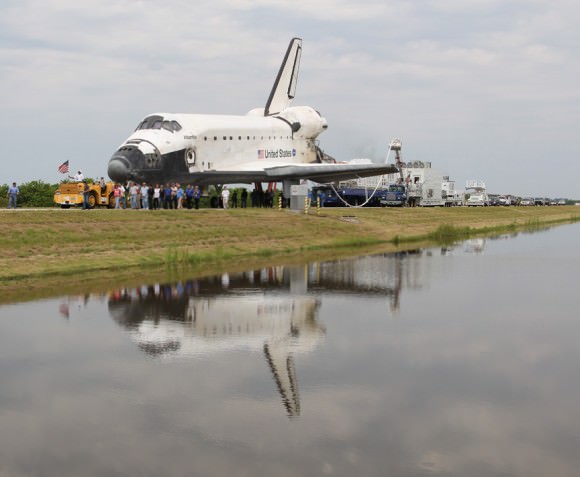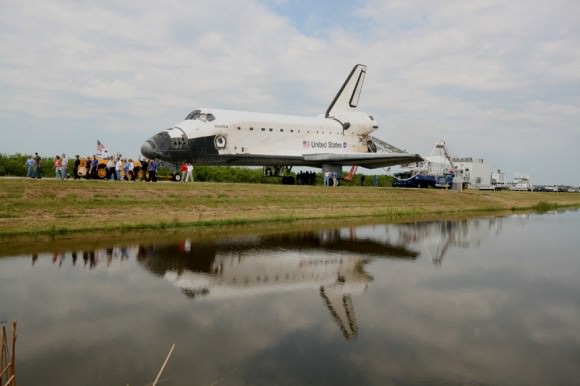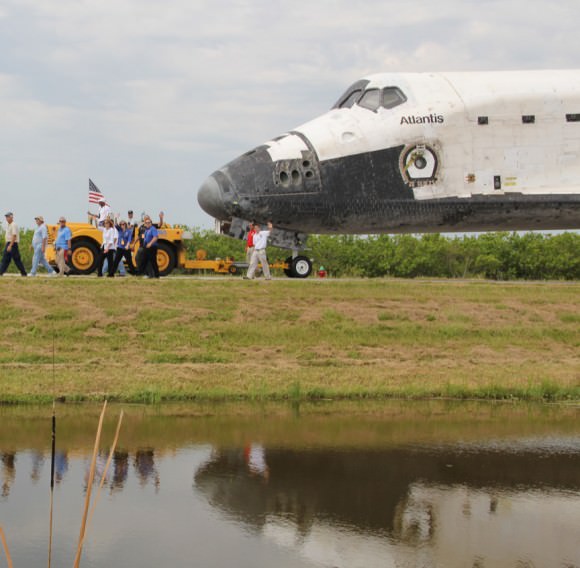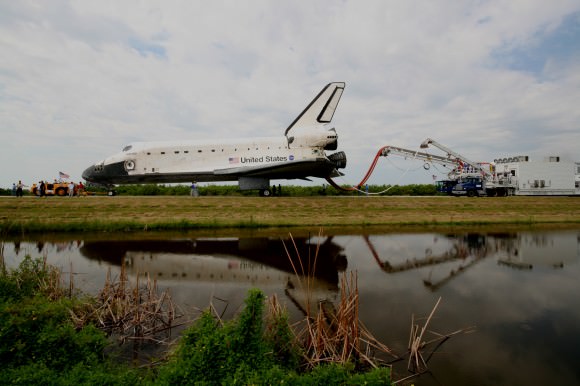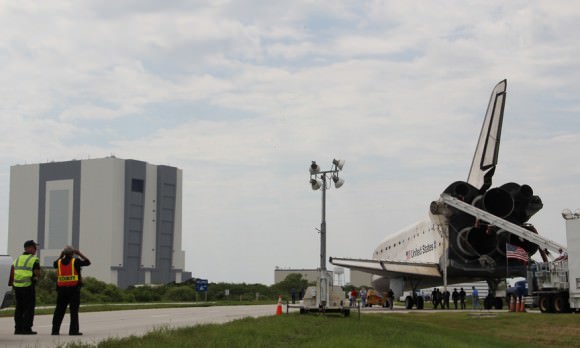[/caption]
An alien ‘Snowman’ on an alien World.
The ‘Snowman’ is a string of three craters and is among the most strange and prominent features discovered on a newly unveiled world in our solar system – the giant asteroid Vesta. It reminded team members of the jolly wintertime figure – hence its name – and is a major stand out in the 3 D image above and more snapshots below.
Until a few weeks ago, we had no idea the ‘Snowman’ even existed or what the rest of Vesta’s surface actually looked like. That is until NASA’s Dawn spacecraft approached close enough and entered orbit around Vesta on July 16 and photographed the Snowman – and other fascinating Vestan landforms.
“Each observation of Vesta is producing incredible views more exciting than the last”, says Dawn’s Chief Engineer, Dr. Marc Rayman of the Jet Propulsion Laboratory. “Every image revealed new and exotic landscapes. Vesta is unlike any other place humankind’s robotic ambassadors have visited.”
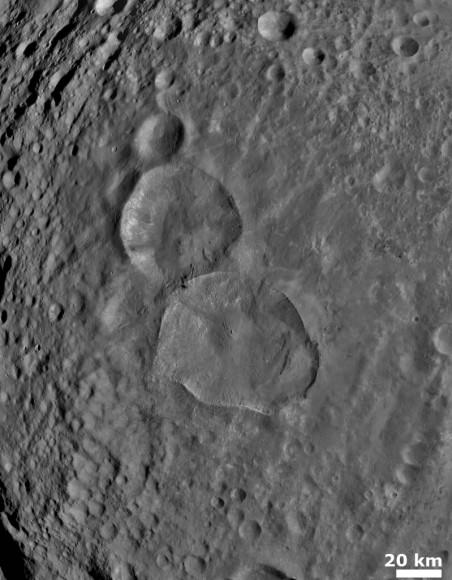
The science team is working to determine how the ‘Snowman’ formed. This set of three craters is nicknamed ‘Snowman” and is located in the northern hemisphere of Vesta. NASA’s Dawn spacecraft obtained this image with its framing camera on August 6, 2011. This image was taken through the framing camera’s clear filter aboard the spacecraft. The framing camera has a resolution of about 280 yards (260 meters). Credit: NASA/JPL-Caltech/UCLA/MPS/DLR/IDA
The Snowman is located in the pockmarked northern hemisphere of Vesta – see the full frame image below. The largest of the three craters is some 70 km in diameter. Altogether the trio spans roughly 120 km in length. See Image at Left
“Craters, Craters, Craters Everywhere” – that’s one thing we can now say for sure about Vesta.
And soon we’ll known a lot more about the mineralogical composition of the craters and Vesta because spectral data is now pouring in from Dawn’s spectrometers.
After being captured by Vesta, the probe “used its ion propulsion system to spiral around Vesta, gradually descending to its present altitude of 2700 kilometers (1700 miles),” says Chief Engineer Rayman. “As of Aug.11, Dawn is in its survey orbit around Vesta.”
Dawn has now begun its official science campaign. Each orbit currently last 3 days.
Dawn’s scientific Principal Investigator, Prof. Chris Russell of UCLA, fondly calls Vesta the smallest terrestrial Planet !
I asked Russell for some insight into the Snowman and how it might have formed. He outlined a few possibilities in an exclusive interview with Universe Today.
“Since there are craters, craters, craters everywhere on Vesta it is always possible that these craters struck Vesta in a nearly straight line but many years apart,” Russell replied.
“On the other hand when we see ‘coincidences’ like this, we are suspicious that it is really not a coincidence at all but that an asteroid that was a gravitational agglomerate [sometimes called a rubble pile] struck Vesta.”
“As the loosely glued together material entered Vesta’s gravity field it broke apart with the parts moving on slightly different paths. Three big pieces landed close together and made adjacent craters.”
So, which scenario is it ?
“Our science team is trying to figure this out,” Russell told me.
“They are examining the rims of the three craters to see if the rims are equally degraded, suggesting they are of similar age. They will try to see if the ejecta blankets interacted or fell separately”
“The survey data are great but maybe we will have to wait until the high altitude mapping orbit [HAMO] to get higher resolution data on the rim degradation.”
Dawn will descend to the HAMO mapping orbit in September.
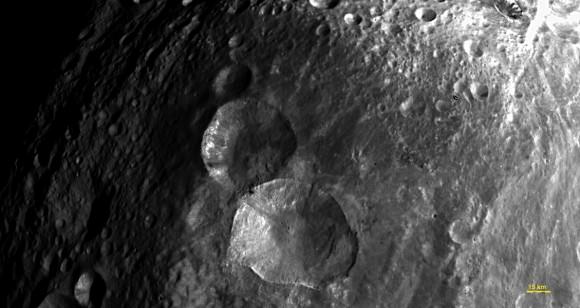
This image of the set of three craters informally nicknamed ‘Snowman’ was taken by Dawn’s framing camera on July 24, 2011 after the probe entered Vesta’s orbit. Snowman is located in the northern hemisphere of Vesta. The image was taken from a distance of about of about 3,200 miles (5,200 kilometers). The framing camera was provided by Germany. Credit: NASA/JPL-Caltech/UCLA/MPS/DLR/IDA
Russell and the Dawn team are elated with the fabulous results so far, some of which have been a total surprise.
How old is the Snowman ?
“We date the age of the surface by counting the number of craters on it as a function of size and compare with a model that predicts the number of craters as a function of size and as a function of time from the present,” Russell responded.
“However this does not tell us the age of a crater. If the crater destroyed all small craters in its bowland and left a smooth layer [melt] then the small crater counts would be reset at the impact.”
“Then you could deduce the age from the crater counts. You can also check the degradation of the rim but that is not as quantitative as the small crater counts in the larger crater. The team is doing these checks but they may have to defer the final answer until they obtain the much higher resolution HAMO data,” said Russell.
Besides images, the Dawn team is also collecting spectral data as Dawn flies overhead.
“The team is mapping the surface with VIR- the Visible and Infrared Mapping Spectrometer – and will have mineral data shortly !”, Russell told me.
At the moment there is a wealth of new science data arriving from space and new missions from NASA’s Planetary Science Division are liftoff soon. Juno just launched to Jupiter, GRAIL is heading to the launch pad and lunar orbit and the Curiosity Mars Science Laboratory (MSL) is undergoing final preflight testing for blastoff to the Red Planet.
Russell had these words of encouragement to say to his fellow space explorers;
“Dawn wishes GRAIL and MSL successful launches and hopes its sister missions join her in the exploration of our solar system very shortly.”
“This year has been and continues to be a great one for Planetary Science,” Russell concluded.
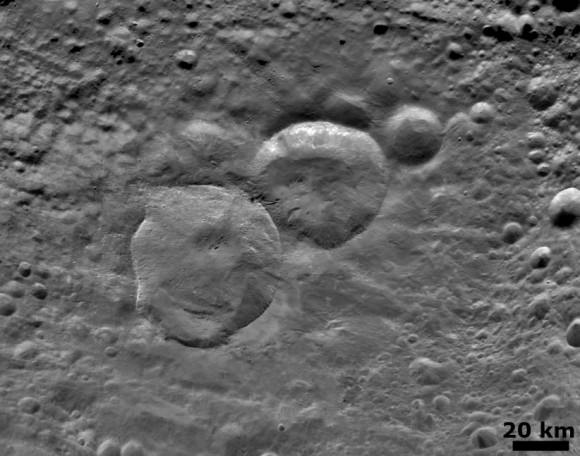
Dawn obtained this image with its framing camera on August 6, 2011. This image was taken through the camera’s clear filter. The camera has a resolution of about 260 meters per pixel. This image shows a detailed view of three craters, informally nicknamed 'Snowman' by the camera’s team members. Credit: NASA/JPL-Caltech/UCLA/MPS/DLR/IDA
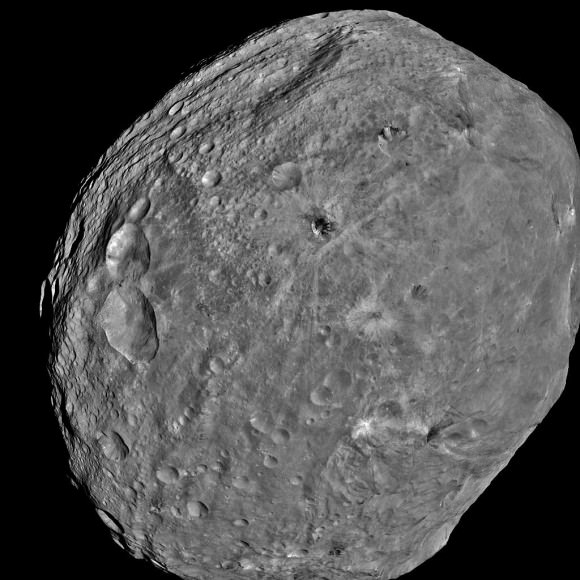
NASA's Dawn spacecraft obtained this image of the giant asteroid Vesta with its framing camera on July 24, 2011. It was taken from a distance of about 3,200 miles (5,200 kilometers). Dawn entered orbit around Vesta on July 15, and will spend a year orbiting the body. The Dawn mission to Vesta and Ceres is managed by NASA's Jet Propulsion Laboratory, Pasadena, Calif. The framing cameras were built by the Max Planck Institute for Solar System Research, Katlenburg-Lindau, Germany, and the German Aerospace Center (DLR) Institute of Planetary Research, Berlin. Credit: NASA/JPL-Caltech/UCLA/MPS/DLR/IDA
Read my prior features about Dawn
NASA Unveils Thrilling First Full Frame Images of Vesta from Dawn
Dawn Spirals Down Closer to Vesta’s South Pole Impact Basin
First Ever Vesta Vistas from Orbit – in 2D and 3D
Dawn Exceeds Wildest Expectations as First Ever Spacecraft to Orbit a Protoplanet – Vesta
Dawn Closing in on Asteroid Vesta as Views Exceed Hubble
Dawn Begins Approach to Asteroid Vesta and Snaps First Images
Revolutionary Dawn Closing in on Asteroid Vesta with Opened Eyes

